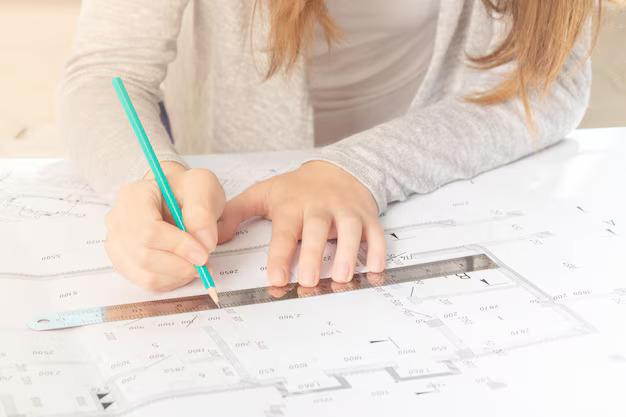Precision and efficiency are crucial in architectural design, and 3D design offers exactly that in architectural modelling. This is why it is considered one of the revolutionary changes in the architectural world. For industrial building architecture, integrating 3D modelling into project workflows has become indispensable, enabling architects, engineers, and construction firms to bring their vision to life with unmatched clarity.
But why has 3D modelling become such a cornerstone for architectural projects? To get an answer to this question, keep reading this article.
1. Enhanced Visualisation and Design Accuracy
One of the primary reasons companies utilise 3D modelling for architectural projects is its ability to offer enhanced visualisation. Unlike 2D drawings, which may leave much to interpretation, 3D models provide a tangible, lifelike representation of what a building will look like. This level of clarity is especially crucial in industrial building architecture, where precision is paramount due to complex structural requirements.
3D models allow architects and clients to “walk through” a design before construction begins. This immersive experience allows them to spot potential issues and design flaws that might not be evident in traditional blueprints. Whether it’s correcting spatial errors or identifying material misalignment, 3D modelling enables a proactive approach to refining architectural designs, ultimately saving time and resources.
Moreover, industrial buildings often require unique specifications like extensive load-bearing walls or precise ventilation systems, and the accuracy provided by 3D modelling is invaluable. These intricate details can be easily tested in a virtual environment, reducing the risk of costly errors once construction commences.
2. Streamlined Collaboration Across Teams
The complexity of architectural projects requires input from multiple stakeholders, including architects, engineers, contractors, and clients. A seamless flow of communication between these parties is crucial to get everyone on the same page. 3D modelling serves as a common language here that all teams can understand, which ultimately promotes greater collaboration and alignment.
When it comes to architectural projects, there are many things to consider, such as heavy machinery, technical installations, and safety protocols. This is why effective collaboration becomes even more important. The visual clarity of 3D models helps break down technical barriers, allowing professionals from different fields to understand the project’s nuances without needing in-depth architectural knowledge.
Furthermore, cloud-based 3D modelling software enables real-time updates and feedback loops. Teams can work on the same model simultaneously, even if they are in different locations, ensuring that everyone remains on the same page throughout the project lifecycle. This level of streamlined collaboration reduces misunderstandings, increases efficiency, and ultimately accelerates the project timeline.
3. Cost Efficiency and Time-Saving
Architectural projects, especially large-scale industrial ones, are inherently expensive. From material procurement to labour costs, the financial outlay for constructing an industrial building can be substantial. This makes cost management a top priority for firms. Here, 3D modelling proves to be of great help, as it helps companies save both time and money by minimising errors and optimising resource allocation during the design and construction phases.
Traditional 2D blueprints are susceptible to errors, as they don’t always capture the full depth and scope of a project. These errors often only become apparent during construction, leading to costly delays and revisions. By using 3D modelling, firms can identify and address potential issues in the early design stages, mitigating the risk of expensive change orders later in the project.
Additionally, 3D models can provide accurate material estimates. The selection and quantity of materials must meet rigorous safety and operational standards, which is why precision is crucial. 3D modelling software can simulate the exact amount of materials needed, preventing over-ordering and reducing waste. This leads to a more sustainable construction process and cost savings for the company.
4. Better Client Engagement and Decision-Making
Clients today demand more involvement in the design process. Whether it’s an industrial building for manufacturing or a large-scale commercial facility, stakeholders want to see exactly how their vision will translate into reality. 3D modelling offers clients an unparalleled understanding of the design, allowing them to make more informed decisions.
Rather than relying solely on abstract concepts, clients can visualise the building’s structure, materials, and layout in real time. This immersive interaction with the design fosters more productive discussions and better decision-making. Also, in the context of industrial building architecture, where the stakes are high due to the complex nature of the projects, involving clients through 3D models is a game-changer. It reduces the likelihood of late-stage changes, ensuring the project remains aligned with the client’s expectations from the outset.
Moreover, 3D models can simulate different scenarios, such as how sunlight will affect the building or how machinery will fit within the space. These simulations give clients a dynamic perspective on how the building will function once completed. By offering a more holistic view of the project, 3D modelling not only improves client satisfaction but also reduces the risk of post-construction modifications.
5. Integration with Advanced Technologies
The future of architecture lies at the intersection of 3D modelling and other advanced technologies such as Building Information Modeling (BIM), Virtual Reality (VR), and Artificial Intelligence (AI). 3D models act as the foundation for these innovations, offering a digital blueprint that can be further enhanced through technological integrations.
For instance, in industrial building architecture, firms can use 3D models in combination with BIM to generate detailed construction schedules, cost estimates, and material procurement plans. This digital ecosystem promotes seamless coordination across all phases of the project, from design to construction to facility management.
Similarly, integrating 3D models with VR allows stakeholders to experience the building fully immersively before construction begins. Clients can “step into” the model and explore every aspect of the design, making it easier to provide feedback and approve changes.
Conclusion:
3D modelling has become a powerful tool in architectural design, offering companies and firms a range of benefits that extend far beyond mere visualisation. In industrial building architecture, where precision, safety, and scale are critical, the advantages of 3D modelling are even more pronounced. Additionally, as technology continues to evolve, 3D modelling will undoubtedly remain at the forefront of architectural innovation, shaping the future of construction for years to come.

